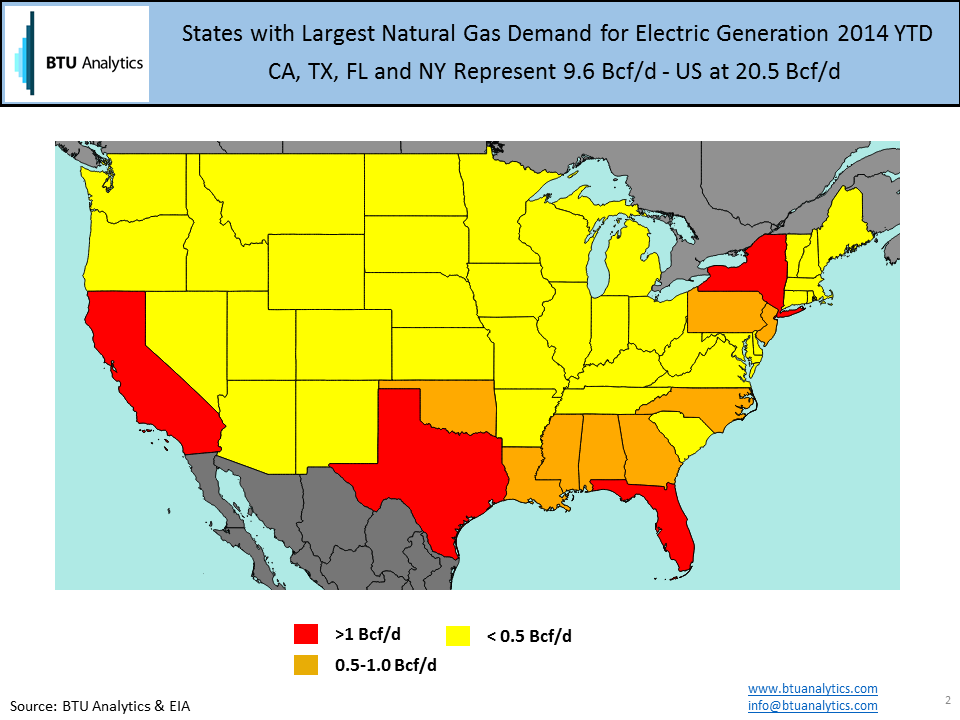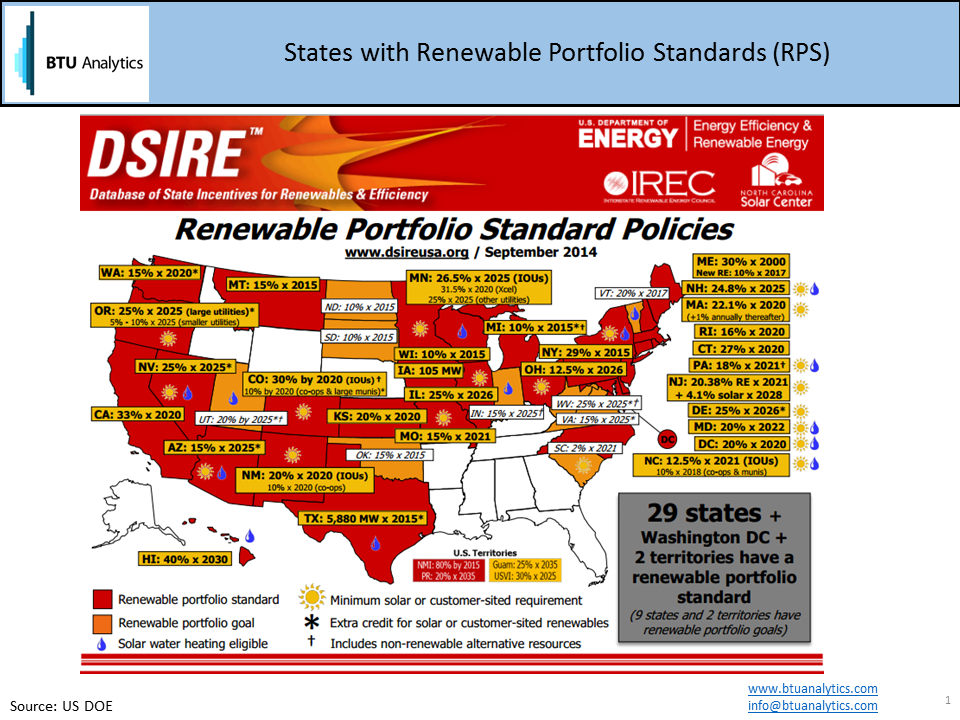In our power demand post last week, we concluded wind and solar are growing at such a rate in the US that they could eat into 3.8 Bcf/d of natural gas fired power demand by 2020. Renewable portfolio standards (RPS) are a state by state phenomena and the main driver of utility scale renewables growth. Therefore, we figured we should take a quick look at the states with high natural gas fired electric generation and what RPS are in place to determine where gas fired generation could be impacted.
According to EIA data for the first six months of 2014, natural gas fired electric generation demand was 20.5 Bcf/d with the biggest states being Texas at 3.6 Bcf/d, Florida at 2.8 Bcf/d, California at 2.1 Bcf/d and New York at 1.1 Bcf/d. These four states, which have over 1.0 Bcf/d of demand, represent a whopping 47% of US natural gas fired electric generation demand. See map below:

So back to RPS, the interesting point is of the top four states California, Texas and New York all have RPS in place. California has a target of 33% renewable generation by 2020, Texas has a target of 5,880 MW of renewables by 2015, which represents about 5% of the 119,312 MW of total installed capacity in Texas, and New York has a 29% target by 2015. Florida does not currently have a RPS in place. See map below:

How far are states towards meeting RPS targets is the question. According to the California PUC, the state’s utilities met 22.7% of their retail electricity sales in 2013 utilizing renewables. Confirming this, the EIA data shows total electric generation was at 23% from renewables for the 1st and 2nd quarter of 2014, while natural gas made up 57% of generation. Since there is hardly any coal generation in California, RPS have no other displacement option than natural gas demand. This would imply there is another 10% of total generation that needs to switch to meet the RPS of 33% renewable generation. This could impact natural gas fired generation demand by as much as 365 MMcf/d in California by 2020 from the current level of 2.1 Bcf/d.
Meanwhile, Texas is at 11% renewable generation which is greater than the 5% RPS target, according to EIA data . So the current Texas RPS should not impact natural gas demand further.
New York is currently at 5% renewable generation compared to the RPS target of 29% by 2015. New York natural gas fired generation represented 1.1 Bcf/d of demand for the first half 2014 or 36% of generation. Coal and oil represent 8% of generation in New York. In order for New York to meet the RPS, if we assume coal and oil are completely displaced, this would mean natural gas generation demand would erode by 475 MMcf/d.
In the context of the expanding natural gas supply situation in North America, gas producers need every bit of demand out there so these meaningful natural gas demand destruction figures are not helpful.








